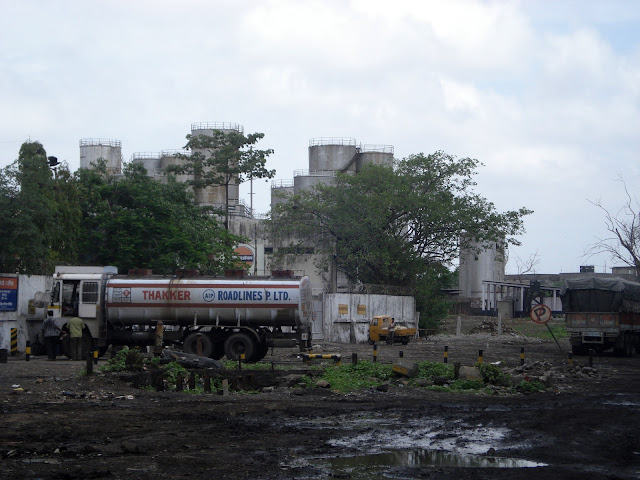Sunday, July 21, 2024
Tuesday, July 09, 2024
Bus Stop Poles
Of fading, erasing, pasting, cramming, overwriting, repainting, decomposing, rusting, hiding, overlapping, fitting, squeezing, crunching, breaking, bending, showing and still standing.
These are poles through which waiting/halting spots for BEST buses are often marked on the streets in the city of Mumbai . They are like google pins in real geography. This morning I wondered how this almost bygone way of marking a bus stop, that are largely (must be) an artefact of smaller villages in India, still exists in a megacity like Mumbai. These red poles are plonked within once-tar finished roads, that stand like iron flags listing the number of bus/routes that pass along this road. Within these mass produced steel plates, the numbers have been once beautifully oil painted by "urban" calligraphers who would have to fit in the alpha-numeric bus numbers in at least two languages. Despite the fact that the newest bus stops have these instructional details printed and produced in newer techniques, BEST strangely preserves many of these poles with old-fashioned bus number plates that remain vulnerable to the externalities of tropical weather and urban roughness.
Often, these beautiful number-plates are abused or graphically disregarded by the newer supervisors who do not see these these plates as a work of art. One can sense that how the urgency of dispensing updated information, and the unavailability of these oil paint calligraphers have led to the haphazard and careless pasting of shabbily handwritten stickers with bus numbers. In other instance, several numbers may have faded or erased to weather and time. Several such poles across the city, unlike the above two, stand crooked loosening their foothold into the every-dug road substrata. Many of their levels have gone haywire due to the concrete up-layering of roads. That such benign information boards could be of utmost important to the labour class that may be visiting these neighbourhoods or city for the first time is perhaps partly out of the purview of the BEST management. That these half-erased numbers could be misleading, misread or handicapping; and perhaps even lead the traveller to a wrong destination does not perhaps bother the regulators of this infrastructure.
However, one must give it to the urban dweller that he/she parses such fragility of the system with a measure of generosity. Such fractures of information produce a distinct sociality by forging communication within strangers waiting together for a common journey. Here, one reveals their destination to the other, with trust and hopes to find a way to reach safely. Here, options of movement are debated, and new alternatives for mobility are discussed. Here, serendipitous connections are made in the overlaps of routes and journeys, or disappointments about the missed buses are shared. Here, exasperations are co-performed and frustrations are vented through grins. And at times, it is here that battles are fought to secure a seat over a long journey.
The red shining bygone metal bus stop flag stands stiff to this everyday roughness of the city, waiting to either dissolve or be engulfed into the smartness of the upgrading city.
Sunday, June 23, 2024
Sunday, June 09, 2024
Tuesday, May 28, 2024
Letting in Light & Air / Indian Express
A response to Indian Express as they ask to consider recent urban mishaps across Indian cities through the instrument of urban planning...
--
Letting in Light and Air (click)
https://indianexpress.com/article/opinion/columns/rajkot-delhi-fires-safer-cities-9355131/
Indian Express
28th May 2024
Anuj Daga



















































